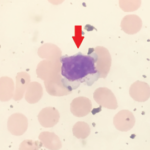NEW YORK (Reuters Health)—The investigational drug abaloparatide may help postmenopausal women increase their bone mineral density (BMD) and reduce their risk of fracture, new industry research suggests.
“What was surprising and very important about this study was that, although some drugs for osteoporosis don’t work across all patient subgroups, abaloparatide provided persistent protection against fracture and it increased bone density across a broad range of menopausal women with osteoporosis,” says co-author Dr. Lorraine A. Fitzpatrick from Radius Health Inc., in Radnor, Pa., which funded the study.
“Abaloparatide worked just as well regardless of the patient’s age, bone density or prior fracture history,” she told Reuters Health.
The findings were presented April 1 at the annual meeting of the Endocrine Society in Boston.
Abaloparatide, which is still investigational, is an osteoanabolic analogue of parathyroid hormone-related protein (1-34). For their study, a multinational phase 3 trial named ACTIVE, Dr. Fitzpatrick and colleagues tested the efficacy and safety of a subcutaneous formulation of the drug in postmenopausal women with osteoporosis who were otherwise healthy and ambulatory.
The team randomized more than 2,400 patients between 49 and 86 years of age (mean: 69) to be injected with one of three medications for 18 months: 80 mcg abaloparatide subcutaneous; 20 mcg open-label subcutaneous teriparatide; or placebo.
At 18 months, the abaloparatide group had increased its BMD by 9.2% at the lumbar spine, by 3.4% at the total hip and by 2.9% at the femoral neck (all p<0.0001 compared with placebo).
Women on abaloparatide had 86% fewer morphometric vertebral fractures (p<0.0001), 43% fewer nonvertebral fractures (p=0.0489) and 70% fewer major osteoporotic fractures (p=0.0004), compared with placebo. The treatment group also had 55% fewer major osteoporotic fractures (p=0.0309) compared with those on teriparatide.
The risk of developing new vertebral or nonvertebral fractures decreased consistently in the abaloparatide group, regardless of baseline risk factors; no interaction was found between any baseline risk factor and the degree of BMD increase with abaloparatide treatment.
Co-author Dr. Paul D. Miller from the University of Colorado School of Medicine in Aurora told Reuters Health, “This is a powerful, robust, well-planned study with a very acceptable safety profile. It was gratifying to see the effects of abaloparatide on vertebral and non-vertebral fractures, not only in people with prior fractures, but in people at high risk based on age and low bone density without prior fractures.”
“I think this anabolic agent that builds new bone and improves bone quality will be available as a first-line treatment for high-risk patients,” said Dr. Miller, also medical director of the Colorado Center for Bone Research in Lakewood.

